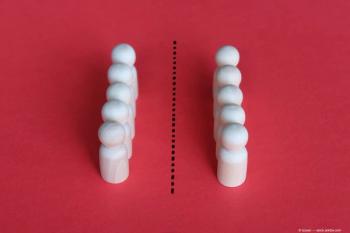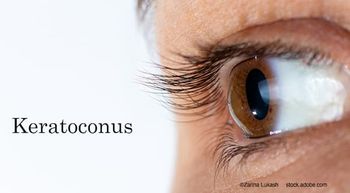
Ranibizumab provides solid safety, efficacy in real-world population
Treatment with ranibizumab is safe and efficacious for currently licensed indications, according to an interim analysis of data from the LUMINOUS Study.
Take-home message: Treatment with ranibizumab is safe and efficacious for currently licensed indications, according to an interim analysis of data from the LUMINOUS Study.
By Lynda Charters; Reviewed by Paul Mitchell, MD
Sydney, Australia-An interim analysis of data from the LUMINOUS Study reconfirmed that treatment with ranibizumab (Lucentis, Novartis) is safe and efficacious for all the current licensed indications.
The LUMINOUS Study is a 5-year, observational, non-interventional, multicenter, international study designed to provide real-world analysis of the data obtained from patients undergoing treatment for neovascular age-related macular degeneration (AMD), visual impairment from diabetic macular edema (DME) and macular edema secondary to retinal vein occlusion, and choroidal neovascularization secondary to pathologic myopia.
Paul Mitchell, MD, PhD, reviewed the data on behalf of the LUMINOUS Study group from the fourth year of the study, i.e., the second interim analysis, that included 20,000 patients evaluated at baseline-10,000 of whom were followed for 1 year after treatment, and 2,000 were followed for 2 years.
The final data analysis in March 2016 included 30,000 patients who have been followed for from 1 to 4 to 5 years at 600 sites with more than 40 countries represented.
Study strengths
The strength of the study is the wide geographic diversity, according to Dr. Mitchell, professor of ophthalmology, Centre for Vision Research, Department of Ophthalmology, and Westmead Millennium Institute, University of Sydney, Australia. He explained that the Despite the study having begun in Canada, the United Kingdom, and Australia-from which most of the patients hailed-substantial percentages of patients are from Asia and Eastern and Western Europe.
Most patients (17,500) from the 20,000 evaluated at baseline had neovascular AMD followed by DME in about 1,700 patients.
Another strength was that the LUMINOUS Study included a wider age range of patients than is seen in pivotal trials, Dr. Mitchell noted.
For neovascular AMD, there are many patients under age 65 and a large number 85 years and older. Among these patients, 42.2% had a pigment epithelial detachment, 6.2% polypoidal choroidal vasculopathy, and 3.8% retinal angiomatous proliferation.
Many patients with DME were younger than 50 years. The age range among patients with branch and central vein occlusion was wide and similar to the general population, he said.
Another characteristic of the LUMINOUS Study was the wider distribution of baseline visual acuities compared with pivotal trials, with many patients having somewhat poor vision at study enrollment and a sizable proportion with 20/40 or better visual acuity.
Many patients with DME had poorer visual acuity with others having visual acuity up to 20/40 or better. Among those with branch vein occlusion, Dr. Mitchell noted a trend toward better visual acuity compared with those with central vein occlusion.
“The baseline visual acuity was higher in patients who had undergone previous treatment with ranibizumab compared with patients who were treatment-naïve for all indications,” Dr. Mitchell said.
Ranibizumab-treated AMD patients had better visual acuity by about 6 to 7 letters compared with treatment-naïve patients.
“This is encouraging and suggests a strong treatment effect,” he said. “Similar findings were observed in patients with DME and branch and central vein occlusions.”
Results
In patients with AMD, at 12 months there was a change in the visual acuity score of +4.4 letters in the treatment-naïve group and a loss of 1.5 letters in those previously treated with ranibizumab over the 12 months (mean injections, 4.7 and 4.3, respectively).
“Interestingly, when evaluating patients followed for less than 1 year, 1 to 2 years, 2 to 3 years, 3 to 4 years, 4 to 5 years, or 6 years, almost the same pattern is seen,” Dr. Mitchell said. “Over the 12 months, there was a loss of about 1.5 letters over that period regardless of how long patients had been receiving treatment.”
When patients were stratified by baseline visual acuity, in patients with a visual acuity of 20/80 or lower, a mean improvement was seen over the 12 months.
However, for those with a visual acuity of 20/60, it was the same and for those with 20/40 or better, a small decrease in visual acuity was seen over the follow-up period, he said.
The number of injections among the visual acuity groups did not differ, he noted.
When patients were stratified by age, patients under 65 years had steep improvements in visual acuity. However, even patients over 85 years achieved improvements in visual acuity but had started with somewhat worse visual acuity.
“The visual acuity gain in older patients was not as great compared with the younger ones,” he said.
The visual acuity outcomes at 12 months in treatment-naïve patients with AMD showed that about 5.6 injections were administered and 8.7 at 24 months with respective letter scores of 3.4 and 2.0, the same trend as in the previously treated patients.
In patients with DME and the vein occlusions, at 12 months the visual acuities were good and at 24 months the same small loss of letters was seen.
Ocular serious adverse events developed in very few patients, 0.54% at 12 months and 0.7% at 24 months. The rates of non-ocular events were 6.52% and 13.34%, respectively, at the two time points.
“The patients in the LUMINOUS Study had more diverse demographics than in the pivotal trials and were more representative of the real world,” Dr. Mitchell summarized. “The 1- and 2-year follow-up data indicated the expected relative preservation of visual acuity.”
Country-level and subanalyses will provide further insights. No new safety signals were identified.
“The LUMINOUS Study will provide an invaluable source of long-term real-world data,” Dr. Mitchell concluded.
Paul Mitchell, MD
This article was adapted from Dr. Mitchell’s presentation during Retina Subspecialty Day at the 2014 meeting of the American Academy of Ophthalmology. Dr. Mitchell is a consultant for Novartis, which sponsored the LUMINOUS Study.
Newsletter
Don’t miss out—get Ophthalmology Times updates on the latest clinical advancements and expert interviews, straight to your inbox.



















































.png)


